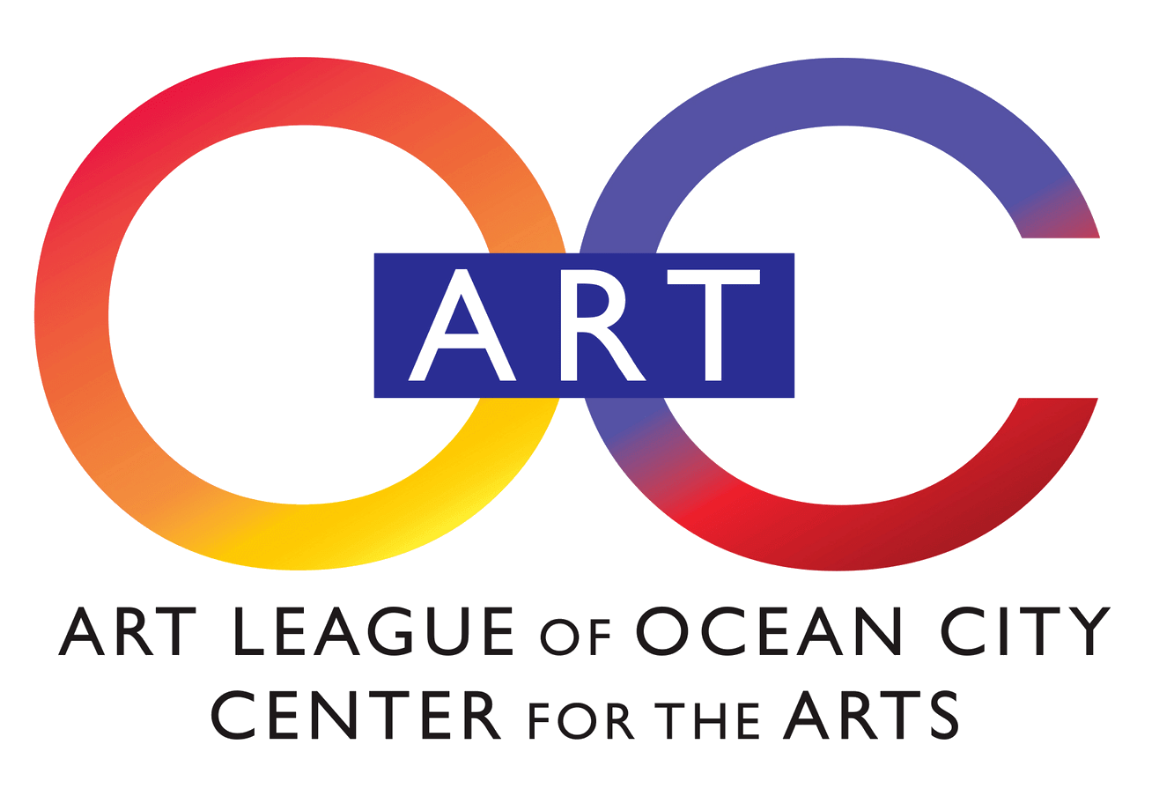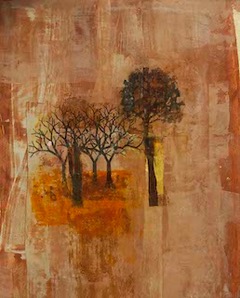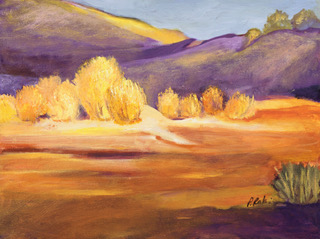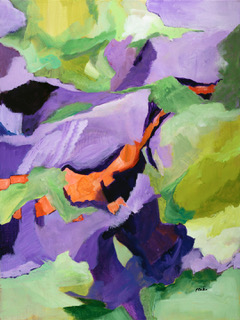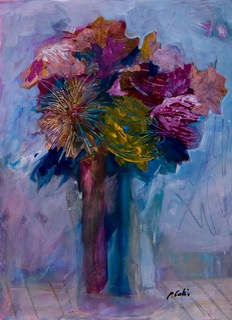
Artist Biography:
Pauline Rakis brings an element of discovery to her paintings. Laying down shapes and colors often unveils unexpected images in her landscapes, still lifes, and seascapes. Some of her works are representational while others are impressionistic.
Acrylic paint is her preferred medium because of its flexibility. After selecting the size and type of support – canvas, paper or wood – she primes the surface with a coat of gesso. A bright undercoat of paint is then used to set the stage for the painting. For her collages, the fluid nature of these paints is instrumental in coloring art tissue. Another method of tinting the tissue is to use rusted items such as nails, washers, and cans that have been sprayed with white vinegar. After spraying the items, they are placed on the tissue and allowed to drip onto the paper creating a variety of interesting shapes and colors.
By 2019, Pauline will have been featured in three solo shows and dozens of group shows on the East Coast. She has won numerous awards for her work – the most noteworthy being featured in the Baltimore Sun.
Artist Statement:
My paintings have an element of discovery. I may have an idea when I start working, but the painting usually takes a different direction. Laying down shapes and colors often brings out an unexpected image that can be developed further. Often a traditional theme or central image emerges such as a landscape, still life, or seascape. The unveiling of such imagery is exciting to me.
Some of my works are representational while others are impressionistic. Non-objective, abstracts and collage are the most freeing. They are also when I am most creative because they allow me to be inventive – calling on my intuition rather than relying on a specific subject. Following an established “art rule” is often restricting.
When working the painting, I may ask myself: is it pleasing, does it have a sense of balance, is it compositionally accurate, do the colors work together, do I need to add lines for a different emphasis? All of which are effected by the selected materials.
After selecting the size and type of support – canvas, paper or wood – I prime my surface with a coat of gesso. A bright undercoat of paint is then used to set the stage for the painting. The undercoat gives luminosity to the piece because it is left uncovered as other layers of paint are applied. Acrylic paints are my preferred medium because of their flexibility. They can mimic watercolors with their fluidity if applied thickly. Acrylics are easily manipulated which can add interesting texture to the piece as well.
For my collages, the fluid nature of acrylic paint is instrumental in coloring art tissue. Another method of tinting the tissue is to use rusted items such as washers, nails, and cans that have been sprayed with white vinegar. After spraying the items, they are placed on the tissue and allowed to drip on the paper creating a variety of interesting shapes and colors.
These techniques invite the viewer to see the work differently – to analyze, to ask questions. Such conversations drive people to communicate within themselves and between others. Igniting such discussions is the ultimate goal of my work: to give insight to a world outside of the one in which we are familiar.
